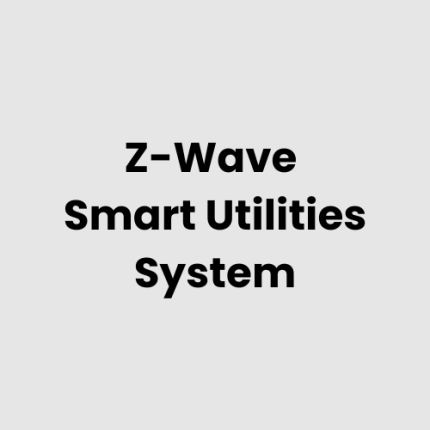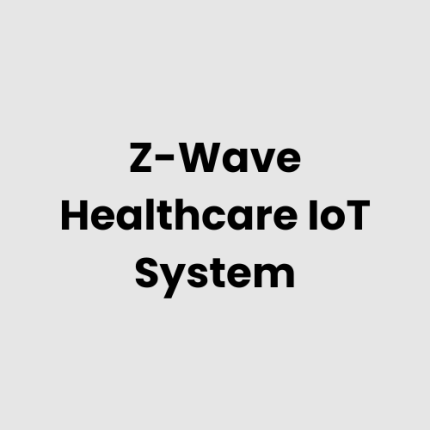Description
Technical Architecture of the Z-wave Enabled Retail IoT System
The Z-wave Enabled Retail IoT System features a modular architecture designed for scalability and seamless integration into modern retail environments. Key components include:
- Edge Devices: Z-wave-enabled sensors and actuators for monitoring store conditions, inventory levels, and customer behavior.
- Gateway Systems: Centralized Z-wave gateways that aggregate data from edge devices and connect to local or cloud-based servers.
- Analytics Platform: AI-driven software analyzes data, providing actionable insights for inventory management, customer personalization, and operational efficiency.
- Cloud Integration: Secure communication protocols ensure real-time data synchronization between local systems and cloud services for scalable storage and analysis.
Hardware List for the Z-wave Enabled Retail IoT System
GAO Tek offers a comprehensive range of hardware components for the Z-wave Enabled Retail IoT System:
- Z-wave Sensors: For temperature, humidity, motion detection, and shelf inventory tracking.
- Smart Tags and Readers: Z-wave-enabled RFID tags for real-time product location tracking.
- Z-wave Gateways: Centralized hubs for connecting IoT devices to local or cloud-based platforms.
- Interactive Displays: Smart screens for customer interaction, product promotion, and inventory lookup.
- Point-of-Sale (POS) Systems: Z-wave-compatible terminals for seamless checkout integration.
- Surveillance Cameras: Integrated with Z-wave technology for security and analytics.
- Energy Management Devices: Smart plugs, lighting, and HVAC controllers to reduce energy consumption.
Physical Placement Considerations
- Sensors: Place shelf-level sensors for optimal inventory monitoring. Ensure motion detectors cover high-traffic areas without interference.
- Gateways: Install at central locations with minimal obstructions for maximum Z-wave network coverage.
- Interactive Displays: Position at eye level in high-traffic zones to attract customer attention.
- POS Systems: Place at checkout counters with adequate space for power and connectivity.
- Surveillance Cameras: Mount in corners or ceilings for comprehensive coverage without blind spots.
Hardware Architecture
The Z-wave Enabled Retail IoT System’s hardware architecture incorporates:
- Device Layer: Sensors, tags, and actuators communicating via the Z-wave protocol.
- Network Layer: Gateways managing device communication and forwarding data to analytical systems.
- Processing Layer: Local servers or edge computing units performing real-time processing.
- Cloud Layer: Scalable storage and AI-powered analytics.
- User Interface Layer: Dashboards and mobile applications for real-time monitoring and control.
Deployment Considerations
- Interference Management: Deploy Z-wave devices on non-overlapping frequencies to reduce interference with Wi-Fi networks.
- Network Redundancy: Ensure backup gateways for critical operations.
- Scalability: Design infrastructure to accommodate future expansion, including additional sensors and analytics platforms.
- Power Supply: Use energy-efficient devices and backup power solutions to prevent downtime.
- Regulatory Compliance: Ensure the system complies with local privacy and data protection laws.
Relevant Industry Standards and Regulations
- ISO/IEC 27001
- IEEE 802.15.4 (Wireless Communication Standards)
- PCI DSS (Payment Card Industry Data Security Standard)
- GDPR and CCPA (Data Privacy Regulations)
- UL Certification (Safety Standards)
- ANSI/BICSI 005-2019
Local Server Version
GAO Tek’s local server deployment of the Z-wave Enabled Retail IoT System ensures high data security and low latency. This version operates entirely within the retailer’s premises, allowing sensitive customer data to remain on-site. The server provides real-time analytics, manages edge devices, and integrates with existing IT infrastructure, making it ideal for businesses prioritizing data sovereignty.
Cloud Integration and Data Management
The Z-wave Enabled Retail IoT System offers seamless cloud integration for scalable data storage and advanced analytics. Data collected by Z-wave devices is securely transmitted to cloud servers, where it is processed using AI algorithms to generate actionable insights. Retailers benefit from remote monitoring, predictive analytics, and automated reporting. GAO Tek ensures compliance with industry-leading security protocols, including encryption and multi-factor authentication.
GAO Case Studies
United States
- New York, NY:
A retail chain leveraged Z-wave sensors for shelf inventory tracking and interactive displays for customer engagement. The system significantly reduced out-of-stock incidents and improved sales conversions.
- Los Angeles, CA:
A large retail store deployed Z-wave-enabled HVAC and lighting controls, resulting in a 30% reduction in energy costs while maintaining optimal customer comfort.
- Chicago, IL:
Using Z-wave smart tags, a clothing retailer enhanced product location accuracy, enabling faster restocking and better inventory management.
- Houston, TX:
A grocery chain implemented Z-wave surveillance cameras for real-time store monitoring and improved security incident response times by 40%.
- Phoenix, AZ:
Z-wave motion sensors helped a department store track customer traffic patterns, leading to a 15% improvement in promotional display effectiveness.
- Philadelphia, PA:
A local retail outlet integrated Z-wave POS systems, streamlining the checkout process and enabling seamless integration with customer loyalty programs.
- San Antonio, TX:
A chain store utilized Z-wave-enabled temperature sensors in cold storage, ensuring compliance with food safety standards and reducing spoilage by 25%.
- San Diego, CA:
Z-wave interactive kiosks were installed in a retail showroom, enhancing customer engagement and increasing upsell opportunities.
- Dallas, TX:
A furniture retailer adopted Z-wave asset tracking to monitor high-value items, improving loss prevention measures.
- San Jose, CA:
A technology store used Z-wave-enabled RFID tags for dynamic pricing displays, adapting prices in real-time based on demand analytics.
- Austin, TX:
A boutique store deployed Z-wave smart locks, enhancing security while enabling remote management of access credentials.
- Jacksonville, FL:
A retail warehouse implemented Z-wave gateways for centralized monitoring of operations, ensuring seamless communication across multiple devices.
- Indianapolis, IN:
A retail chain adopted Z-wave energy management devices, achieving significant savings on utility bills during peak seasons.
- Columbus, OH:
A sports retailer leveraged Z-wave motion sensors for targeted in-store advertising, increasing customer interaction with promotional displays.
- Seattle, WA:
A coffee shop chain integrated Z-wave technology for automated queue management, enhancing the overall customer experience.
Canada
- Toronto, ON:
A high-end retail store utilized Z-wave-enabled interactive displays and customer behaviour sensors to optimize store layouts, leading to a 20% increase in sales.
- Vancouver, BC:
A grocery store implemented Z-wave cold chain monitoring systems, ensuring compliance with health regulations and maintaining product freshness.
Navigation Menu for Z-Wave
- Z- Wave Gateways/Hubs
- Z-Wave End Devices
- Z-Wave-Cloud, Server, PC& Mobile System
- Z-Wave Accessories
- Z-Wave Resources
Navigation Menu for IoT
- LORAWAN
- ZIGBEE
- Wi-Fi HaLow
- Z-WAVE
- BLE & RFID
- NB-IOT
- CELLULAR IOT
- GPS IOT
- IOT SENSORS
- EDGE COMPUTING
- IOT SYSTEMS
Our products are in stock and can be shipped anywhere in the continental U.S. or Canada from our local warehouse. For any further information, please fill out this form or email us.
We are actively looking for partners who are like us located in the U.S. and Canada. For more information on partnering with GAO, please visit Partner with GAO Tek Inc. It lists various ways to partner with GAO, such as OEM Partnerships, Technology Integration, Distribution and Reselling Opportunities, Presenting at the Leading Event Tek Summit, Joint R&D Projects, Training and Consulting Services, Industry-Specific Collaborations, Research and Academic Partnerships.



